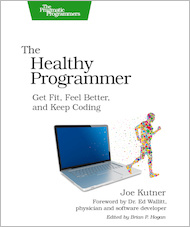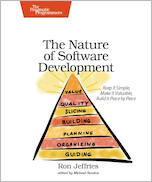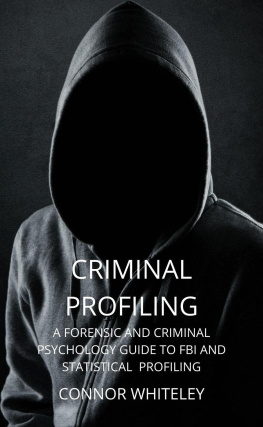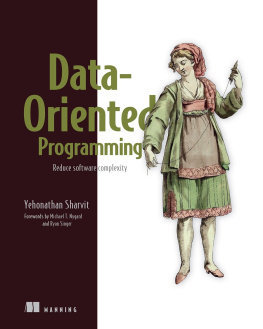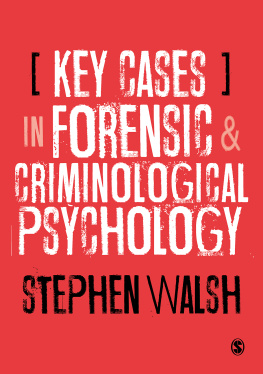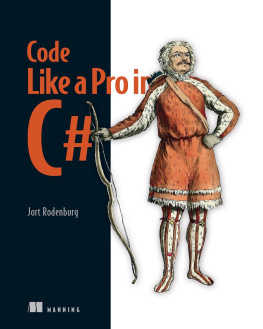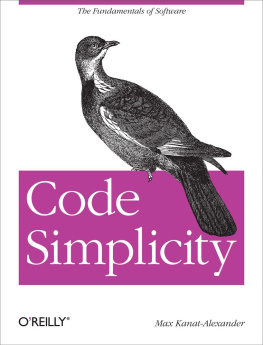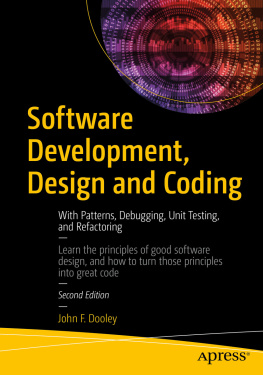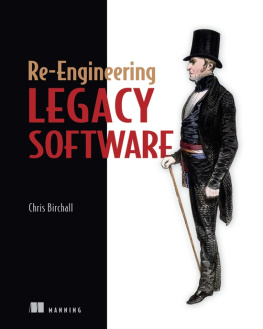Adam Tornhill - Your Code as a Crime Scene: Use Forensic Techniques to Arrest Defects, Bottlenecks, and Bad Design in Your Programs
Here you can read online Adam Tornhill - Your Code as a Crime Scene: Use Forensic Techniques to Arrest Defects, Bottlenecks, and Bad Design in Your Programs full text of the book (entire story) in english for free. Download pdf and epub, get meaning, cover and reviews about this ebook. year: 2015, publisher: Pragmatic Bookshelf, genre: Computer. Description of the work, (preface) as well as reviews are available. Best literature library LitArk.com created for fans of good reading and offers a wide selection of genres:
Romance novel
Science fiction
Adventure
Detective
Science
History
Home and family
Prose
Art
Politics
Computer
Non-fiction
Religion
Business
Children
Humor
Choose a favorite category and find really read worthwhile books. Enjoy immersion in the world of imagination, feel the emotions of the characters or learn something new for yourself, make an fascinating discovery.
- Book:Your Code as a Crime Scene: Use Forensic Techniques to Arrest Defects, Bottlenecks, and Bad Design in Your Programs
- Author:
- Publisher:Pragmatic Bookshelf
- Genre:
- Year:2015
- Rating:5 / 5
- Favourites:Add to favourites
- Your mark:
Your Code as a Crime Scene: Use Forensic Techniques to Arrest Defects, Bottlenecks, and Bad Design in Your Programs: summary, description and annotation
We offer to read an annotation, description, summary or preface (depends on what the author of the book "Your Code as a Crime Scene: Use Forensic Techniques to Arrest Defects, Bottlenecks, and Bad Design in Your Programs" wrote himself). If you haven't found the necessary information about the book — write in the comments, we will try to find it.
Jack the Ripper and legacy codebases have more in common than youd think. Inspired by forensic psychology methods, youll learn strategies to predict the future of your codebase, assess refactoring direction, and understand how your team influences the design. With its unique blend of forensic psychology and code analysis, this book arms you with the strategies you need, no matter what programming language you use.
Software is a living entity thats constantly changing. To understand software systems, we need to know where they came from and how they evolved. By mining commit data and analyzing the history of your code, you can start fixes ahead of time to eliminate broken designs, maintenance issues, and team productivity bottlenecks.
In this book, youll learn forensic psychology techniques to successfully maintain your software. Youll create a geographic profile from your commit data to find hotspots, and apply temporal coupling concepts to uncover hidden relationships between unrelated areas in your code. Youll also measure the effectiveness of your code improvements. Youll learn how to apply these techniques on projects both large and small. For small projects, youll get new insights into your design and how well the code fits your ideas. For large projects, youll identify the good and the fragile parts.
Large-scale development is also a social activity, and the teams dynamics influence code quality. Thats why this book shows you how to uncover social biases when analyzing the evolution of your system. Youll use commit messages as eyewitness accounts to what is really happening in your code. Finally, youll put it all together by tracking organizational problems in the code and finding out how to fix them. Come join the hunt for better code!
What You Need:
You need Java 6 and Python 2.7 to run the accompanying analysis tools. You also need Git to follow along with the examples.
Adam Tornhill: author's other books
Who wrote Your Code as a Crime Scene: Use Forensic Techniques to Arrest Defects, Bottlenecks, and Bad Design in Your Programs? Find out the surname, the name of the author of the book and a list of all author's works by series.

